The European Union

(fb2, 2233 страницы, 11 382 Kb)
Жанр: Taylor and Francis
Издательство: Taylor and Francis
In the fifty or so years since the Treaty of Rome, the European Union has evolved far beyond the scope of any other comparable entity. The EU is now a unique model of international cooperation and integration, and its reach extends into almost every sphere of the lives of its half a billion citizens. As well as the establishment of a single market, the Union has its own currency, is developing a foreign policy, and has a growing role in justice and cultural matters. Scholarly work on the European Union has undergone a similarly rapid evolution. For example, with the major expansions of the Union since the end of the Cold War, there has been a huge growth in the range and depth of research into the many challenges of integration. As serious thinking about and around this and other crucial aspects of the European Union continues to flourish and develop, this new title in Routledge’s acclaimed Critical Concepts in Political Science series meets the need for an authoritative reference work to make sense of the subject’s vast literature and the continuing explosion in research output. Edited by Simon Usherwood, a leading EU scholar, it is a five-volume collection of foundational and cutting-edge contributions. The first volume in the collection (‘The Development of the European Union’) assembles the key work on the historical evolution of the European Union from the end of the Second World War to the present day. Even before the Constitutional Treaty proposed in 2004, there was much academic and political discussion about the degree and manner to which the EU transcended traditional political units and the materials gathered in Volume II (‘The Organization of the European Union and the Constitutional Turn’) explore the nature of the Union at this most fundamental level. The third volume in the collection (‘The Institutions of the European Union’) collects the most important research on the institutional structure of the EU. Here, the focus is on the dynamic processes at work within institutions and the models of understanding that academics have developed. Volume IV (‘Member States as Actors in the European Union’), meanwhile, brings together the best work on particular member states, considering, for example, why certain states have remained dominant actors within the Union, despite the scope and depth of EU expansion. In addition, the processes and outcomes which underpin this dominance? such as europeanisation? are also explored. The final volume in the collection (‘Citizens as Actors in the European Union’) concentrates on a very particular feature of the Union: the role of individual citizens. The material gathered here probes issues such as the perceived ‘democratic deficit’ in the Union. Fully indexed and with comprehensive introductions to each thematic part, newly written by the editor, which place the collected material in its historical and intellectual context, The European Union is an essential work of reference. It is destined to be valued by political science scholars and researchers? as well as by EU specialists and policy-makers? as a vital one-stop research tool.